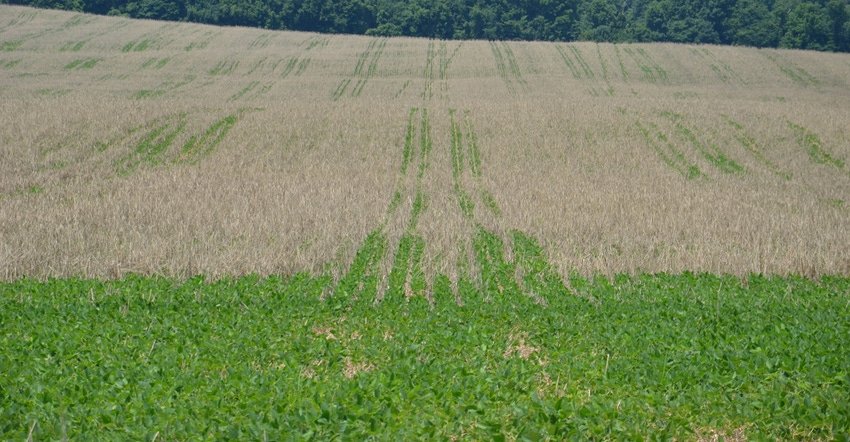
This field of soybeans growing after a cereal rye cover crop is an eye-catcher. It’s relatively weed-free, and the soybeans were off to a good start in late June.
Nothing is known about how this field was handled. However, Bill Johnson, Purdue University Extension weed control specialist, believes you can learn lessons about cover crop termination from this example.
“If you assume cereal rye was 1.5 to 2 feet tall when sprayed, it probably took a full rate of glyphosate to control it,” he observes. “You don’t want to skimp on rates with cereal rye at that size, especially if it might be on the cool or cloudy side.”
Johnson makes another observation. “It looks like the soybeans in the tire tracks from the sprayer where cereal rye was knocked down are slightly taller,” he says. “It’s possible to get competition for soybeans from cereal rye as it’s dying. There would be less competition where the sprayer tires knocked the rye down.”
Johnson says growers with well-equipped planters have another option today. They could plant green into living cereal rye and then terminate the rye.
“I think you can make a case for terminating cereal rye before planting while it’s shorter versus planting into it green later,” he says. “It’s about competition again. If you spray earlier and terminate the cereal rye, you’re going to risk less setback once soybeans emerge. They won’t be competing with the rye cover crop at that point.”
About the Author(s)
You May Also Like




